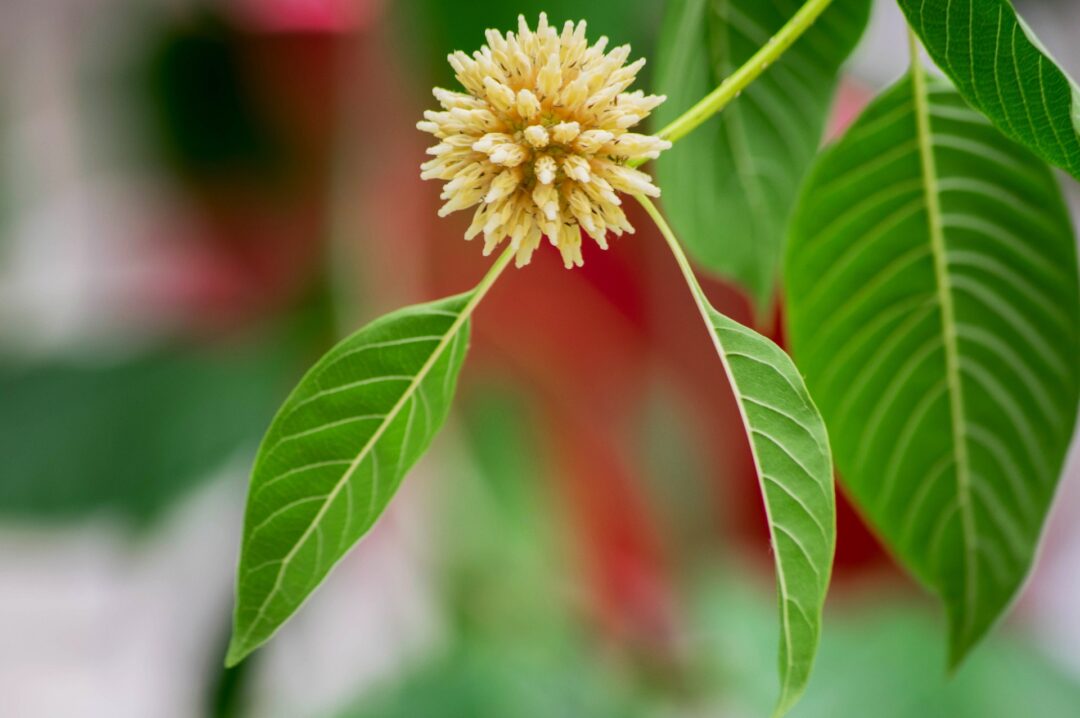The ECDD looked at seven substances: Brorphine, Metonitazene, Eutylone, 4F-MDMB-BICA, Benzylone, Kratom, and Phenibut. The first two were added to Schedule 1 of the Single Convention on Narcotic Drugs, the third was added to Schedule II of the Convention on Psychotropic Substances, and the rest are to be kept under surveillance.
The summary noted that the main psychoactive components of kratom are mitragynine and 7-hydroxymitragynine, two alkaloids—7-hydroxymitragynine is also a metabolite of mitragynine. Kratom has been under ECDD surveillance since 2020, due to a country-level report indicating the potential for abuse, dependence, and harm to public health, as well as a report from an international organization regarding documented fatalities associated with kratom use. These two reports sparked a pre-review.
Kratom Functions and Uses
The Summary also explained and considered how kratom works, its potential for dependence and abuse, and its therapeutic use.Kratom’s alkaloids are partial agonists at the mu-opioid receptor, the Summary states, and bind to adrenergic receptors as well as serotonergic and dopamine receptors. Human studies have demonstrated the analgesic effects of kratom, while animal studies have shown it to have antidepressant and antipsychotic effects. Reported adverse effects of kratom intoxication have included neuropsychiatric, cardiovascular, gastrointestinal, and respiratory symptoms, a list which includes agitation, hallucinations, seizure, tachycardia, hypertension, abdominal pain, vomiting, and respiratory depression. Cases of kratom-associated liver toxicity have also been documented.
Looking at dependence potential and actual abuse, the Summary points to animal models that have shown withdrawal symptoms following repeated kratom use, although the symptoms were less severe than withdrawal from morphine. Humans have seen similar symptoms and effects, with some evidence suggesting that withdrawal is usually mild. There are a few cases of neonatal opioid withdrawal symptoms in neonates born to gestational parents who used kratom regularly.
Animal studies have shown mixed results, with regards to potential for abuse. While kratom can produce serious toxicity in people who use high doses, the Summary states that the number of cases is probably low as a proportion of the total number of kratom users. Kratom use has been associated with and confirmed in a number of deaths and in cases of driving under the influence, but most of the deaths involved use of other substances, making it difficult to determine the extent to which the death was caused by kratom, and few of the DUIs have managed to establish that kratom caused the driving impairment.
Therapeutically, people report using kratom to self-medicate a variety of disorders, including pain, opioid withdrawal, opioid use disorder, anxiety, and depression. The plant is used as part of traditional medicine in some countries.
Recommendation
The ECDD concluded that there is insufficient evidence to recommend a critical review of kratom, according to the Summary, noting that only one member of the Committee felt there was sufficient evidence. The final recommendation: “The Committee recommended that kratom, mitragynine and 7-hydroxymitragynine be kept under surveillance by the WHO Secretariat.”The fullSummary can be found here.
Previous Reporting & Action
TheAmerican Kratom Association(AKA) worked towards this outcome,presenting arguments to the ECDDon October 11. In a press release on the topic, Mac Haddow, Senior Fellow on Public Policy, commented: “All public presentations on kratom were clearly opposed to the international scheduling of kratom. In fact, only one of the speakers addressed an issue other than kratom, demonstrating both how united the scientific community studying kratom is against a ban, and how unnecessary it was to include kratom in the WHO ECDD’s prereview process. Clearly the anti-kratom sentiment is coming from one source: the FDA. Although we didn’t hear the anti-kratom speakers today, the FDA will have the ability to make their views on kratom known as a part of the member-state submissions. However, based on the strong presentations made on the science of kratom during the presentations this morning, I believe we have established the position that the FDA is unfairly biased against kratom.”In May 2021, U.S. Marshals, at the request of FDA,seized more than 207,000 units of dietary supplements and bulk dietary ingredients that were or contained kratom, including over 34,000kg of bulk kratom—which totaled up to approximately $1.3 million worth of product, all manufactured by Atofil, LLC.
Judy McMeekin, Pharm.D., FDA Associate Commissioner for Regulatory Affairs, commented at the time: “There is substantial concern regarding the safety of kratom, the risk it may pose to public health and its potential for abuse. The FDA will continue to exercise our full authority under the law to take action against these adulterated dietary supplements as part of our ongoing commitment to protect the health of the American people. Further, there are currently no FDA-approved uses for kratom.”
The seizure prompted a tweet from former FDA Commissioner Scott Gottlieb, M.D., stating: “We were prevented by HHS from moving forward with the scheduling of Kratom, and I’m convinced it’s fueling the opioid addiction crisis.”
The full report on the seizurecan be found here.
Related: Congressional Lawmakers Call to Stop International Kratom Ban ICYMI: Kratom May Have Therapeutic Effects and Low Potential for Abuse NPA Sues FDA: Asks Courts to “Block Unlawful Action in NAC Situation”










